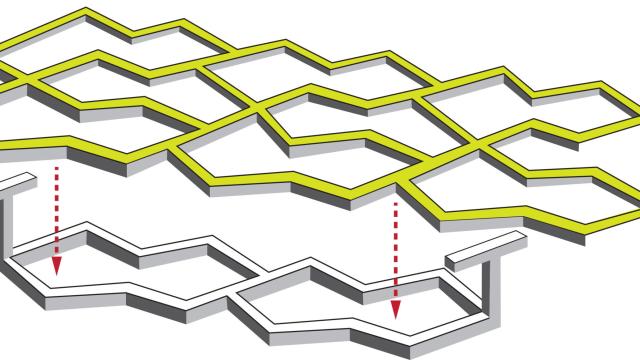In the not-too-distant future, patients with damaged hearts or livers might receive tissue patches grown in a lab. This week, researchers announced an important development toward that goal: A biodegradable scaffold that allows strips of beating heart tissue to snap together like Velcro.
We’ve gotten pretty good at growing human cells in vitro, but scaling up to tissues and organs presents a few major challenges. One, coaxing a cluster of cells to take on their proper, functional arrangement in a petri dish. Heart-forming cardiomycetes, for instance, all need to line up in the same direction in order to beat together. Two, building lab-grown tissues out in three dimensions. Biomedical researchers use scaffolds to grow thin sheets of tissue, but to be useful for human transplants, these sheets need to stack together.

The new scaffold, developed by researchers at the University of Toronto and published this week in Science Advances, could solve both of these challenges. The scaffold’s honeycomb shape provides a template that causes groups of cells to line up in the same direction. Affixed to the top of each scaffold are a series of T-shaped posts, which serve to hook layers of cells together. The design was inspired by Velcro, which in turn takes inspiration from the burrs some plants use to hitch their seeds onto animals.
To test the new scaffold out, the researchers grew several layers of heart tissue, hooked them together, and ran an electric current through it. Almost immediately, the entire stack started beating in sync.
Best of all, this technique isn’t just limited to heart cells: The scaffold, which degrades naturally in the human body, could be used to build layers of liver and lung tissue, as well. So if you get a life-saving tissue transplant in the future, you might end up thanking the same material that snaps your kid’s shoes together.
[Read the full scientific paper at Science Advances via U. Toronto News]
Top image: T-shaped posts on one layer of a tissue scaffold pass through the holes in a second layer — similar to the hooks and loops used to fasten Velcro™, via Raymond Cheah
